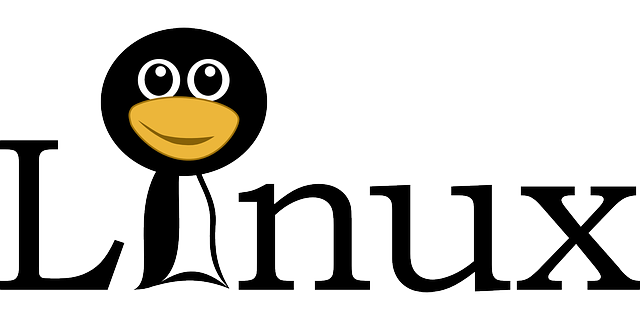ALT Linux is a user-centric distribution that stands out for its advanced package management system 'apk,' which builds on Gentoo's Portage with an improved interface and efficiency. The apk system provides users with extensive software availability, effortless updates, and the ability to fine-tune their system. It excels in dependency management, resolving conflicts and enhancing performance for complex setups and multiple applications. ALT Linux boasts a comprehensive repository network with specialized repositories like 'core,' 'main,' 'multimedia,' 'extras,' and 'testing,' allowing users to install software that fits their specific needs. The distribution's commitment to regular updates, stability, and security positions it as a highly reliable choice for those who prioritize package management excellence. For troubleshooting package issues, users should update repository sources, inspect dependencies, and consult system logs, with `apt-get update` and `apt-get -f install` being key commands. Manual intervention might be necessary if automatic resolution fails. Regular maintenance practices like cache cleaning and removing obsolete packages help ensure system health and prevent future problems. ALT Linux combines its package management with APT, which can lead to conflicts; users must stay vigilant, especially regarding accurate system clocks for security purposes. Employing `apt-get clean` and `apt-get autoremove` are recommended for maintaining optimal system performance.
Explore the robust package management system of ALT Linux, a distribution that stands out for its efficient and user-friendly approach to software handling. This article delves into the intricacies of managing applications within ALT Linux, from understanding its core mechanisms to troubleshooting common package management issues. Uncover the essence of the system in “Unraveling the Core of ALT Linux’s Package Management System,” and master the navigation of its repositories with our guide “Navigating the Repositories: A User’s Guide to ALT Linux Packages.” Gain insights into resolving potential snags in “Troubleshooting Common Issues in ALT Linux Package Management,” making your experience with ALT Linux both seamless and rewarding.
- Unraveling the Core of ALT Linux's Package Management System
- Navigating the Repositories: A User's Guide to ALT Linux Packages
- Troubleshooting Common Issues in ALT Linux Package Management
Unraveling the Core of ALT Linux's Package Management System

ALT Linux stands as a robust distribution, often commended for its user-friendly approach and comprehensive package management system. At the heart of this system lies the Portage system, known as ‘apk’ package management system, which is derived from Gentoo Linux but tailored to provide ALT Linux users with a more straightforward and efficient experience. The apk system is designed to handle packages across multiple repositories, ensuring that users have access to an extensive array of software, both from the official repositories and third-party sources. This flexibility allows for seamless updates, reliable package installation, and the ability to customize the system to a granular level. Furthermore, the system’s built-in mechanisms for handling dependencies are adept at resolving conflicts and optimizing system performance, which is particularly beneficial for users running complex or multiple applications. The result is a system that not only adheres to strict update policies but also maintains a high level of stability and security for its users, making ALT Linux a strong contender for those seeking a reliable package management experience.
Navigating the Repositories: A User's Guide to ALT Linux Packages

When engaging with ALT Linux, a robust and versatile Linux distribution, users are granted access to an extensive network of repositories that house a multitude of software packages for various applications. Navigating these repositories is a fundamental skill for any ALT Linux user, as it allows for the seamless installation and management of software tailored to the user’s needs. The repository structure within ALT Linux is designed with user accessibility in mind, featuring categorized package lists that facilitate finding and installing software efficiently. Users can leverage the package manager included with ALT Linux, such as ‘alt-get’, to interact with these repositories. This guide will elucidate the steps necessary for users to effectively navigate the ALT Linux package repositories, from understanding the repository layout to executing commands that install and update software components.
To begin, it’s crucial to familiarize oneself with the primary repository types available in ALT Linux, which include ‘core’, ‘main’, ‘multimedia’, ‘extras’, and ‘testing’. Each repository serves a distinct purpose and contains packages suited for different use cases. For instance, the ‘core’ repository provides essential software, while ‘main’ offers a broader selection of packages, including those for multimedia applications in the ‘multimedia’ repository. By mastering the use of these repositories, users can tailor their system to their preferences and requirements with precision. Additionally, understanding how to search for and identify specific packages, manage package repositories, and resolve any dependencies or conflicts is key to maintaining a well-organized and optimized ALT Linux installation. With this knowledge at hand, users can navigate the rich ecosystem of software that ALT Linux offers, ensuring a personalized and smooth user experience.
Troubleshooting Common Issues in ALT Linux Package Management

When encountering issues with package management in ALT Linux, users often find that a systematic approach to troubleshooting can effectively resolve most problems. Common errors such as failed installations or updates can typically be addressed by first ensuring that the system’s repositories are configured correctly. Users should verify their repository sources and ensure they have the latest entries by running `apt-get update`. If issues persist, checking the package dependencies and resolving any missing or conflicting packages is a crucial step. ALT Linux utilizes both its own package management system and the widely-used APT framework, which can lead to occasional conflicts that must be manually resolved.
For those experiencing package installation or upgrade problems, it’s often beneficial to examine the system logs, specifically the output of `apt-get -f install`, which can pinpoint missing or broken packages. Additionally, the package manager’s logs, typically found in `/var/log/apt`, can provide insight into the specific errors encountered during the operation. In cases where a package cannot be resolved automatically, manual intervention may be required, such as downloading and installing the necessary package files from a trusted source. Users should also ensure their system clock is set correctly, as incorrect time settings can lead to security issues and further complications with package management. Regular maintenance tasks, including cleaning up cached packages with `apt-get clean` and removing obsolete packages with `apt-get autoremove`, can prevent buildups that may cause future issues.
ALT Linux stands out with its robust and user-friendly package management system, a cornerstone of its performance and versatility. This article has delved into the intricacies of managing software within ALT Linux, from understanding its core mechanisms to mastering repository navigation, and addressing common issues that users may encounter. For those looking for a dependable and adaptable Linux distribution, ALT Linux’s package management system is a testament to its commitment to user experience and reliability. Users are encouraged to explore the distribution’s offerings, confident in the knowledge that the package management resources are there to support their journey with ALT Linux. Whether you are new to the platform or an experienced user, the insights provided aim to enhance your interaction with this distribution, making it a seamless experience for all.


























